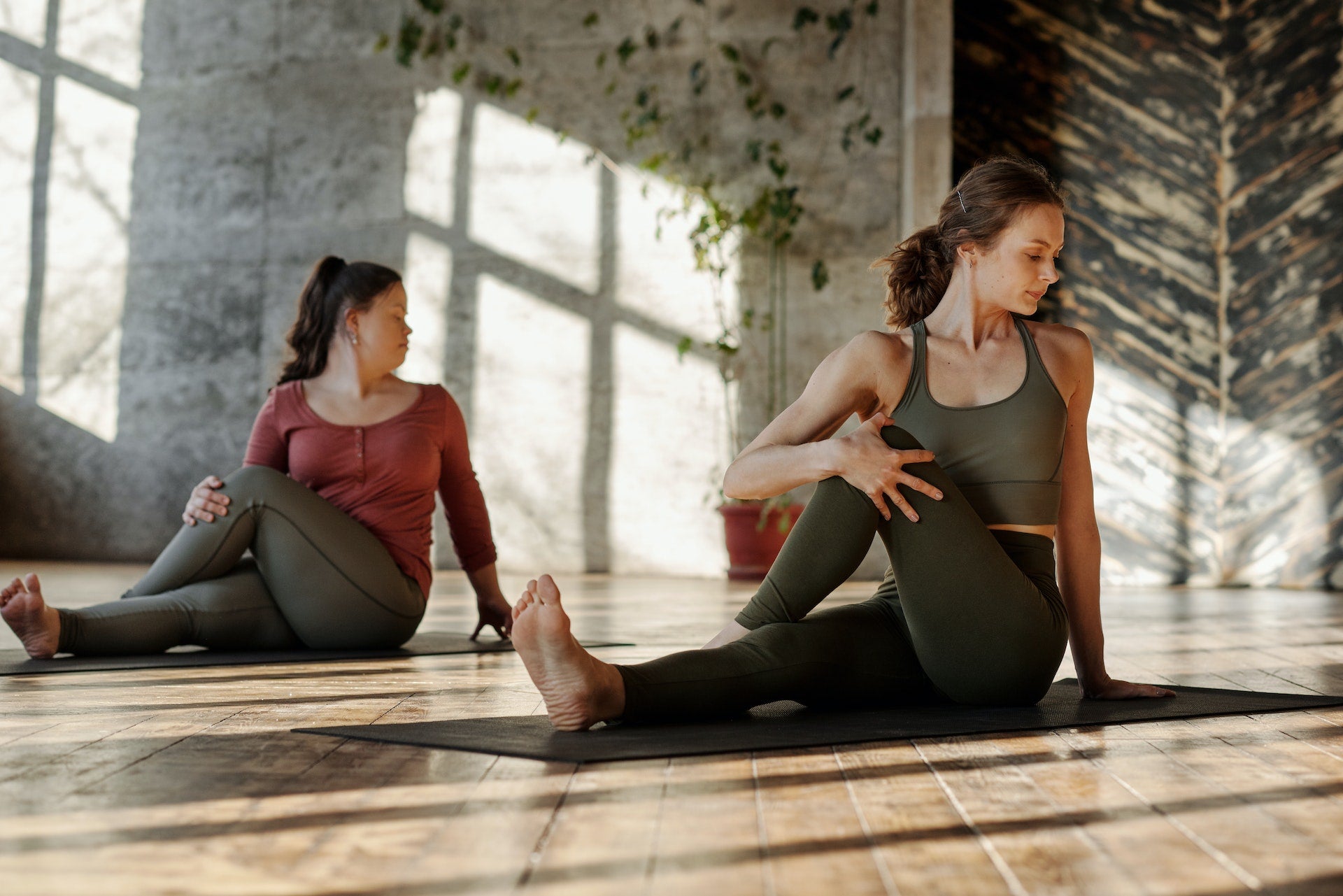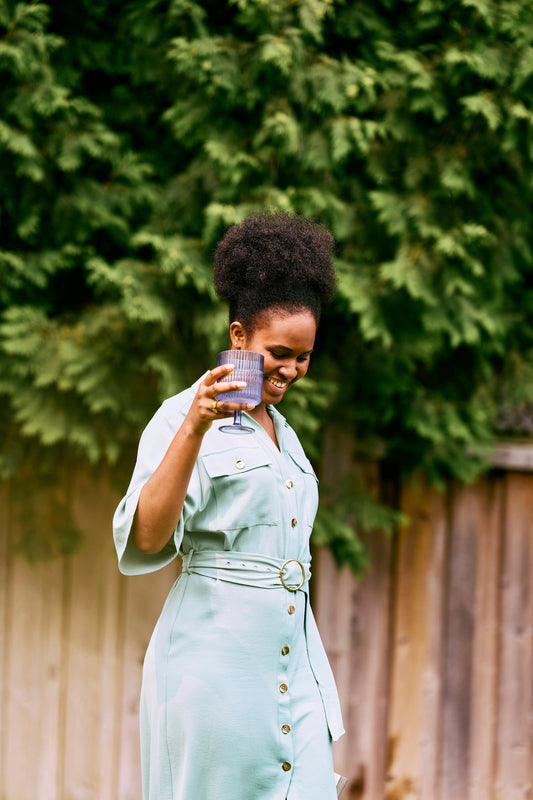|
Key Takeaways:
|
One week you’re cruising through a workout and the next you can barely make it through the same workout without feeling like you ran a marathon. If you’re someone who menstruates, you’ve likely experienced this change in exercise performance firsthand. Factors like sleep, nutrition, and stress could be the cause. But it could also have to do with your menstrual cycle.
The fluctuation of hormones throughout your menstrual cycle impacts more than just your reproductive function, but other physiological systems. And this rollercoaster ride of hormones could have implications for your workout.1
The good news is you can arm yourself with the knowledge you need to work with your body instead of against it. And the best way to do that is to learn about the different phases of your menstrual cycle, track your symptoms, and apply what you’ve learned to cycle sync your workouts so you can work smarter and not just harder.
Benefits of Cycle Syncing Your Workouts
But what exactly makes cycle syncing so useful? There are a few benefits to getting to know your menstrual cycle and using that knowledge to power your workout routine:
- It helps you feel more energized so you can get more out of your workout
- It maximizes your time in the gym, making your workout more effective
- It provides more context or understanding as to why a workout might feel easier or more difficult one day vs. another
- It helps you support your body & mind
- It takes away the “guilt” of taking a rest day (and could even help you decide when to take one!)
- It could help ease any symptoms you’re experiencing
But what exactly are the different phases of your menstrual cycle and how could they impact your workout? Let’s dive in to find out.

How to Workout According to Your Menstrual Cycle
There are four phases in your menstrual cycle: menstruation, follicular phase, ovulation, and the luteal phase.2 Hormones drive each phase of this cycle. Let’s talk about how these hormones could be impacting your exercise routine—and how to get more out of your training by tailoring your workout to your menstrual cycle.
Exercise During Menstruation
In the first phase of your menstrual cycle, your body is shedding the lining of your uterus or endometrium because a pregnancy didn’t occur.2 3 Your menstrual cycle, also called your period, can last anywhere from three days to a week and might be accompanied by painful or uncomfortable symptoms like cramps, headaches, fatigue, nausea, and more.4
Many women wonder if they can work out while on their period. The short answer is yes. Research shows that exercising while you’re on your period is safe and could help ease painful symptoms.4 8
However, you might not feel up for your heaviest lift or your toughest workout. During your period, your progesterone and estrogen levels are at their lowest. This means it’s normal to experience a decrease in energy and motivation.5 Not to mention the cramping, headaches, and discomfort you might be dealing with.
Your body is more fatigued during this phase than the others, so it might not be the best time to challenge yourself or push for a new personal record. But if you’re up for it, there’s no reason not to work out during your period.
Here are a few suggestions for exercising during menstruation:
- If energy or motivation levels are low, consider reducing the intensity of your usual workout with lighter weight or fewer reps.
- Opt for low-intensity cardio like going for a walk or a short bike ride.
- Don’t put pressure on yourself to train on days you’re experiencing heavy symptoms, discomfort, or pain.
- Try gentle movements like stretching or yoga that can help relieve tension in the body.
Exercise During the Follicular Phase
The follicular phase starts on day one of your cycle and ends around day 14 when you begin ovulation. It’s during this phase that your body restarts the process of thickening the lining of your uterus in preparation for a possible pregnancy.2 6 During this time, the brain also releases several hormones including a gonadotropin-releasing hormone (GnRH) and follicle-stimulating hormone (FSH) that cause follicles in your ovaries to grow.6 7
And as your period comes to an end, not only are your period symptoms subsiding but your estrogen levels continue to rise. And along with an increase in estrogen comes an increase in energy. This means that for many people, the follicular phase is a great time to turn up the intensity in the gym.5
Here are a few suggestions for exercising during the follicular phase:
- This could be a great time to tackle high-intensity exercises like strength training, HIIT, and cardio.
- Estrogen promotes glucose availability and uptake, which means that during this phase, your body is better able to build and maintain muscle. So this could be a good time to focus on strength training and endurance.1
- With a cooler body temperature than other phases, you can get outside and exercise (or do some hot yoga) without worrying as much about overheating.9
- It’s also an excellent time for trying something new, challenging yourself, or pushing to the next level of your workout routine.
Exercise During Ovulation
Around day 14 of your cycle, a sudden increase in the luteinizing hormone (LH) causes your ovary to release an egg that then travels along your fallopian tube to your uterus. It’s during this time, and up to five days before ovulation, that pregnancy can occur.6
During your short ovulation window, your energy levels will feel similar to that of the follicular phase. So, if you’re feeling up for it this is a good time to push or challenge yourself. But some do experience side effects like spotting or discomfort in the abdomen during ovulation, so you might want to shift your exercise routine if you’re not feeling 100%.3
Exercise During the Luteal Phase
In the luteal phase, your hormones are at their highest, with increasing levels of progesterone to help prepare your body for a possible pregnancy. Progesterone inhibits glucose availability and uptake, which means that during this phase your body is less effective at providing energy or fuel for your muscles.1
In other words, workouts are going to feel harder than usual and your endurance might suffer as a result. In one study on runners, for example, researchers found that this phase had the worst results for performance compared to the early and late stages of the follicular phase.10
Your body temperature also rises during the luteal phase, which means that exercise in hot or humid conditions will be a lot harder.9 Although you might not experience any visible symptoms, it’s normal during this phase to be left wondering: why am I struggling more than usual in this workout?
Here are a few suggestions for exercising during the luteal phase:
- With a decrease in muscle-building capacity, this phase might not be the best for making gains, but that doesn’t mean you should skip a tough workout. Listen to your body if you need more recovery time between sets than usual.
- You’ll be quicker to exhaustion in this phase, so build in more rest days to recover from your workouts.
- Progesterone helps aid in the breakdown of protein, so a pre or post-workout protein snack could help improve your performance during this phase.1
- Be wary of working out in the heat and drink plenty of water to avoid dehydration.
- Your energy levels at the start of this phase will be much higher than at the end as you get closer to menstruation. Keep that in mind as you plan your workouts.
Cycle Sync Your Workouts by Tracking Your Cycle
The best way to get to know your body and the phases you’re passing through is to track your cycle using a health device or app. Detailed symptom and mood tracking help paint a clear picture of each phase. And with this, you can start to notice trends. For example, you might notice more energy and focus during one phase and fatigue in another. You can use this data to make more informed decisions about not only your workout routine but other aspects of your life.
![]()
The Takeaway
Through research, we’re continuing to discover more and more about the menstrual cycle and how it impacts everything from nutrition to injury prevention to joint flexibility.11 And if you’re wondering why we’re just starting to discover a lot of these things, that’s because the field of sports medicine has focused a lot on male athletes.
As a result, a lot of training principles offer a one-size-fits-all or it-works-for-men-so-it-must-work-for-women approach. But as we’re coming to discover, that’s not always the case. This is why tracking your cycle and understanding the phases and how they impact your body could help you design a more effective workout routine that takes those energy and hormone changes into account.
And remember, everyone’s body is different. You might feel 100% ready to take on a tough workout on your period. Or maybe the idea of picking up a dumbbell feels unimaginable during your high-energy follicular phase. Listen to the signs your body is giving you and let those be your guide.
Sources:
- Oosthuyse, T., & Bosch, A. N. (2010). The Effect of the Menstrual Cycle on Exercise Metabolism. Sports Medicine, 40(3), 207–227. https://doi.org/10.2165/11317090-000000000-00000
- Menstrual Cycle (Normal Menstruation): Overview & Phases. (2022, December 9). Cleveland Clinic. Retrieved March 16, 2023, from https://my.clevelandclinic.org/health/articles/10132-menstrual-cycle
- Menstrual Cycle: An Overview. (2019, December 26). Johns Hopkins Medicine. https://www.hopkinsmedicine.org/health/wellness-and-prevention/menstrual-cycle-an-overview
- Daley, A. (2008). Exercise and Primary Dysmenorrhoea. Sports Medicine, 38(8), 659–670. https://doi.org/10.2165/00007256-200838080-00004
- U.S. Department of Health and Human Services. (2021, February 16). Physical activity and your menstrual cycle. Office on Women’s Health. Retrieved March 16, 2023, from https://www.womenshealth.gov/getting-active/physical-activity-menstrual-cycle
- Department of Health & Human Services. (2022, June 9). Menstrual cycle. Better Health Channel. Retrieved March 16, 2023, from https://www.betterhealth.vic.gov.au/health/conditionsandtreatments/menstrual-cycle
- Monis CN, Tetrokalashvili M. Menstrual Cycle Proliferative And Follicular Phase. 2022 Sep 12. In: StatPearls [Internet]. Treasure Island (FL): StatPearls Publishing; 2022 Jan–. PMID: 31194386.
- Yang, N., & Kim, S. (2016). Effects of a Yoga Program on Menstrual Cramps and Menstrual Distress in Undergraduate Students with Primary Dysmenorrhea: A Single-Blind, Randomized Controlled Trial. Journal of Alternative and Complementary Medicine, 22(9), 732–738. https://doi.org/10.1089/acm.2016.0058
- De Jonge, X. a. K. J., Thompson, M. W., Chuter, V., Silk, L., & Thom, J. M. (2012). Exercise Performance over the Menstrual Cycle in Temperate and Hot, Humid Conditions. Medicine and Science in Sports and Exercise, 44(11), 2190–2198. https://doi.org/10.1249/mss.0b013e3182656f13
- Goldsmith, E., & Glaister, M. (2020). The effect of the menstrual cycle on running economy. Journal of Sports Medicine and Physical Fitness, 60(4). https://doi.org/10.23736/s0022-4707.20.10229-9
- Menstrual cycle and exercise: Why knowing more about your cycle can help improve athletic performance. (2023, February 23). HealthPartners. https://www.healthpartners.com/blog/how-tracking-your-period-can-help-improve-athletic-performance/



